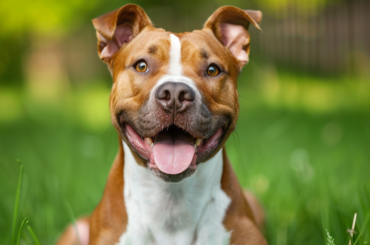Embarking on the journey of potty training your furry companion can be both exciting and challenging. While accidents are inevitable, there are strategies and insider tips that can help minimize messes and streamline the training process. Whether you’re welcoming a new puppy into your home or working to correct habits in an older dog, mastering potty training is essential for a harmonious household. Let’s explore some insider tips to conquer dog potty training mishaps once and for all.
Understand Your Dog’s Signals
Dogs communicate in various ways, and understanding their cues is key to successful potty training. Observe your dog’s behavior closely, especially before accidents occur. Signs such as sniffing, circling, or sudden restlessness often indicate the need to go potty. By recognizing these signals early on, you can intervene proactively and guide your dog to the designated elimination area.
Establish a Consistent Routine
Consistency is paramount when it comes to potty training. Set a regular schedule for feeding, watering, and bathroom breaks, and stick to it diligently. By establishing a routine, you help your dog anticipate when it’s time to relieve themselves, reducing the likelihood of accidents indoors. Be patient and persistent, as it may take time for your dog to adapt to the new routine.
Use Positive Reinforcement
Positive reinforcement is a powerful tool in potty training. Whenever your dog eliminates in the designated area, shower them with praise, treats, and affection. This positive association encourages them to repeat the behavior in the future. Conversely, avoid punishment or scolding for accidents, as it can create anxiety and confusion in your dog, hindering progress.
Supervise and Confinement
During the initial stages of potty training, close supervision is essential to prevent accidents. Keep a watchful eye on your dog, especially after meals or playtime when they’re more likely to need a bathroom break. If you can’t supervise directly, consider confining your dog to a designated area or using a crate. Crate training can be particularly effective, as dogs instinctively avoid soiling their living space.
Clean Accidents Thoroughly
Accidents are inevitable, but how you handle them can influence your dog’s behavior. Clean up accidents promptly and thoroughly using enzymatic cleaners specifically designed to eliminate pet odors. Avoid using ammonia-based cleaners, as they can attract dogs back to the same spot. By removing traces of scent, you discourage repeat accidents in the same area.
Adjust Expectations
Potty training is a gradual process, and setbacks are normal. Be patient with your dog and adjust your expectations accordingly. Celebrate progress, no matter how small, and remain consistent in your training efforts. With time, patience, and positive reinforcement, your dog will learn to consistently use the designated potty area.
FAQs (Frequently Asked Questions)
1-How long does it take to potty train a dog?
The duration of potty training can vary depending on factors such as the dog’s age, breed, and previous experiences. While some dogs may learn quickly within a few weeks, others may take several months to fully grasp the concept. Consistency and patience are key throughout the training process.
2-What is the best age to start potty training a puppy?
Puppies can start learning basic potty training habits as early as 8 weeks old. However, their bladder control and ability to hold their urine will improve gradually over the first few months. It’s essential to begin the training process early to establish good habits and prevent accidents.
3-Should I use pee pads or take my dog outside for potty training?
Both methods can be effective, depending on your lifestyle and living situation. Pee pads can be convenient for indoor training, especially for apartment dwellers or during inclement weather. However, transitioning to outdoor elimination is ultimately ideal for long-term success. Consistency in using either method is key.
4-How often should I take my dog outside for bathroom breaks?
Frequency of bathroom breaks depends on factors such as the dog’s age, size, and activity level. As a general guideline, puppies may need to go out every 1-2 hours, while adult dogs can typically hold their bladder for longer periods, ranging from 4-8 hours. Be sure to take your dog out after meals, playtime, and naps, as these are common times when they’ll need to relieve themselves.
5-What should I do if my dog has an accident indoors?
Accidents are a natural part of the learning process. If your dog has an accident indoors, remain calm and avoid punishment, as it can create fear and confusion. Instead, clean up the mess thoroughly using enzymatic cleaners to eliminate odors and discourage repeat accidents. Focus on reinforcing positive potty habits and continue with consistent training.
6-My dog seems to be regressing in potty training. What should I do?
Regression in potty training is not uncommon, especially during times of stress, change, or inconsistency. Evaluate any recent changes in routine or environment that may be contributing to the regression. Reinforce positive behaviors, revisit training basics, and ensure consistency in your approach. With patience and persistence, your dog can overcome setbacks and continue progressing in their potty training journey.
Potty training your dog requires dedication, patience, and understanding. By implementing these insider tips and strategies, you can minimize mishaps and foster good bathroom habits in your furry friend. Remember to observe your dog’s cues, establish a consistent routine, and use positive reinforcement to encourage desired behaviors. With perseverance and a positive attitude, you’ll soon conquer dog potty training and enjoy a harmonious relationship with your four-legged companion.

